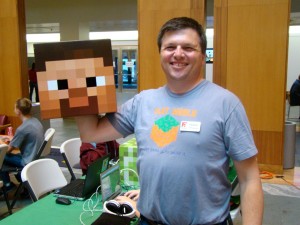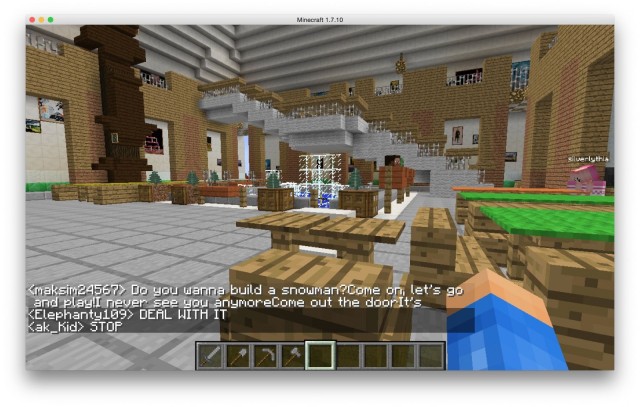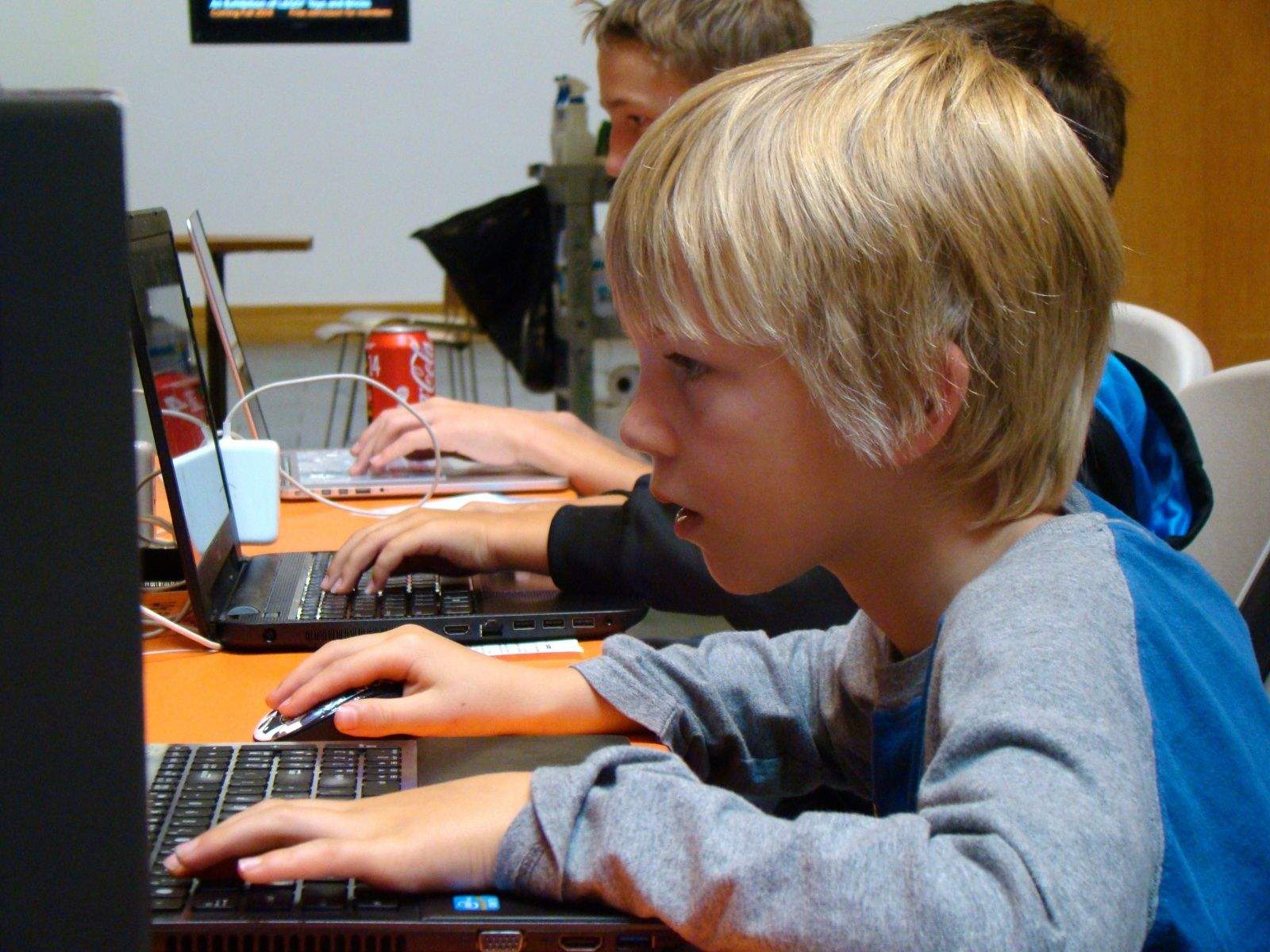ANCHORAGE, Alaska — 12-year-old Josh couldn’t wait to get to the museum. For once, the visit wouldn’t be about “boring” old artwork or educational science, but something he really loves — Minecraft.
“This is great,” he said while tapping and mousing his way through a multiplayer Minecraft landscape that was part of an activity at The Anchorage Museum. “My friend told me about this and it’s way better than staying at home doing this in my bedroom.”
The elementary-age boys and girls gathered at the museum Wednesday in two sessions of three hours each for a total of 80 spots. A big screen at the front of the room showed the game world, which ran on three redundant servers to make sure it didn’t crash.
The museum wanted to get kids excited about coming to the museum. Minecraft — something they are already doing (and loving) at home — seemed like a great way to get their attention.
“It’s like when you run a theater, and notice that your audience is graying,” said Greg Danner, the museum’s curator of science and interactivity. “At some point you have to meet your future patrons where they are, and that’s playing video games.”
Developed by Swedish indie developer Markus “Notch” Persson, Minecraft is a global phenomenon that’s spawned a hugely successful company and versions that will run on Macs, PCs, game consoles and smartphones.

This is the Alaskan museum’s first foray into using Minecraft to bring kids and families to the museum. The idea is to give them some context for playing the game: to build the museum. Kids were given choices of differently colored tables to sit at, each of which corresponded to a different area of the museum’s physical layout. Some kids worked together to build the large atrium, complete with stairs, water fountain and open, gallery-style architecture. Still others worked on recreating the Imaginarium, a permanent science and technology exhibit that tends to be the museum’s typical educational draw.
There were some rules — no griefing (intentionally destroying others’ work) allowed — but for the most part, the kids weren’t given direct instruction on how to accomplish the tasks. Most of the kids didn’t know each other, but over the course of three hours, friendships developed. One kid might need the Wi-Fi password, another might wonder how to best create a stairway in-game. The social interactions increased in quality and number over the time allotted.

Most of the older kids, especially in the atrium area, got to work right away. Within the first two hours, the entire large room was built — the stairway, the fountain, the coffee shop and even the big-screen TV and player tables with their associated colors. Not all the kids participated in the task, of course. Some of them joined other Internet servers using the museum network; other, younger players ran amok with swords drawn, while still others were banned for putting too many “villagers” into the area, clogging up the server.
All of them had fun, if judged by the smiles around the room.
Danner’s not sure what’s next. “This is our pilot project,” he said. “We’re going to debrief next week and figure out what we want to do from here.”
Some ideas, though, might include regular Minecraft gatherings, creating famous artworks in Minecraft for students to explore (a similar program is going on at London’s Tate museum), or even helping kids understand physics through the in-game electrical building mechanics (redstone). If all goes well, the organization may hook another generation of museum attendees — and patrons.


